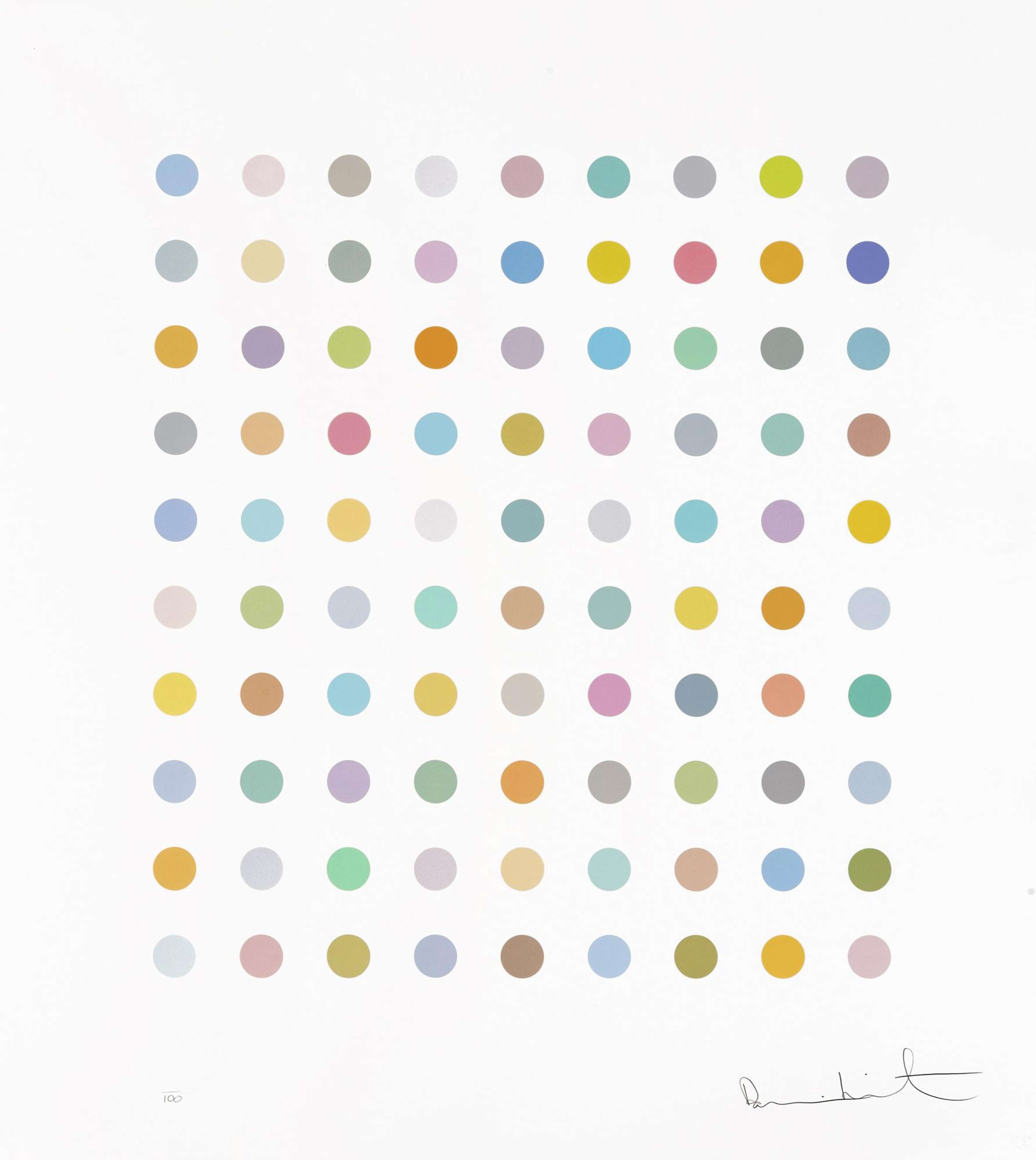
Vipera Lebetina

Vipera Lebetina
Signed Print
Damien Hirst
£8,000-£12,000
$16,000-$24,000 Value Indicator
$15,000-$22,000 Value Indicator
¥80,000-¥110,000 Value Indicator
€9,000-€13,500 Value Indicator
$80,000-$120,000 Value Indicator
¥1,660,000-¥2,490,000 Value Indicator
$10,500-$16,000 Value Indicator
There aren't enough data points on this work for a comprehensive result. Please speak to a specialist by making an enquiry.
49 x 43cm, Edition of 100, Screenprint
Auction Results

Track auction value trend
Meaning & Analysis
Vipera Lebetina is a screen print from 2011 by Damien Hirst. Considered within Hirst’s famous group of Spots paintings, this is an editioned print that shows several rows of ‘spots’ in a grid-like composition. Differing from many of the most iconic Spots paintings that use bright, saturated colours, this work uses a more muted colour palette against an off-white backdrop.
The title of each Spots painting is named after a pharmaceutical drug, which are then each grouped into series’ through subcategories of medication. In order to title his Spots paintings, Hirst purchased the Physicians’ Desk Reference, which was an commercially published annual collection of information on prescription drugs for manufactures. Hirst has remarked that “it was just an afterthought to name them after drugs, based on this book, but I saw it and thought: I have just got to do all of them.”
This quote partially explains the impossible endlessness that characterises the Spots paintings. Set in grid-formulas and each depicting a unique combination of coloured dots, this series of works allows Hirst to expand his practice across three studios with assistants to carry out his instructions for painting. With only a few basic rules, Hirst established a system not dissimilar from Andy Warhol’s Factory from the 1960s, whereby hundreds of Spots paintings are produced on a large scale.